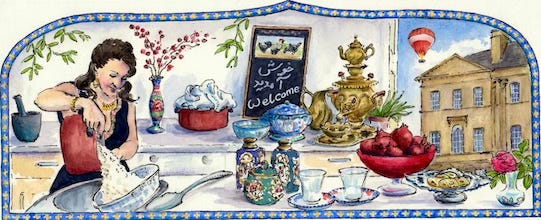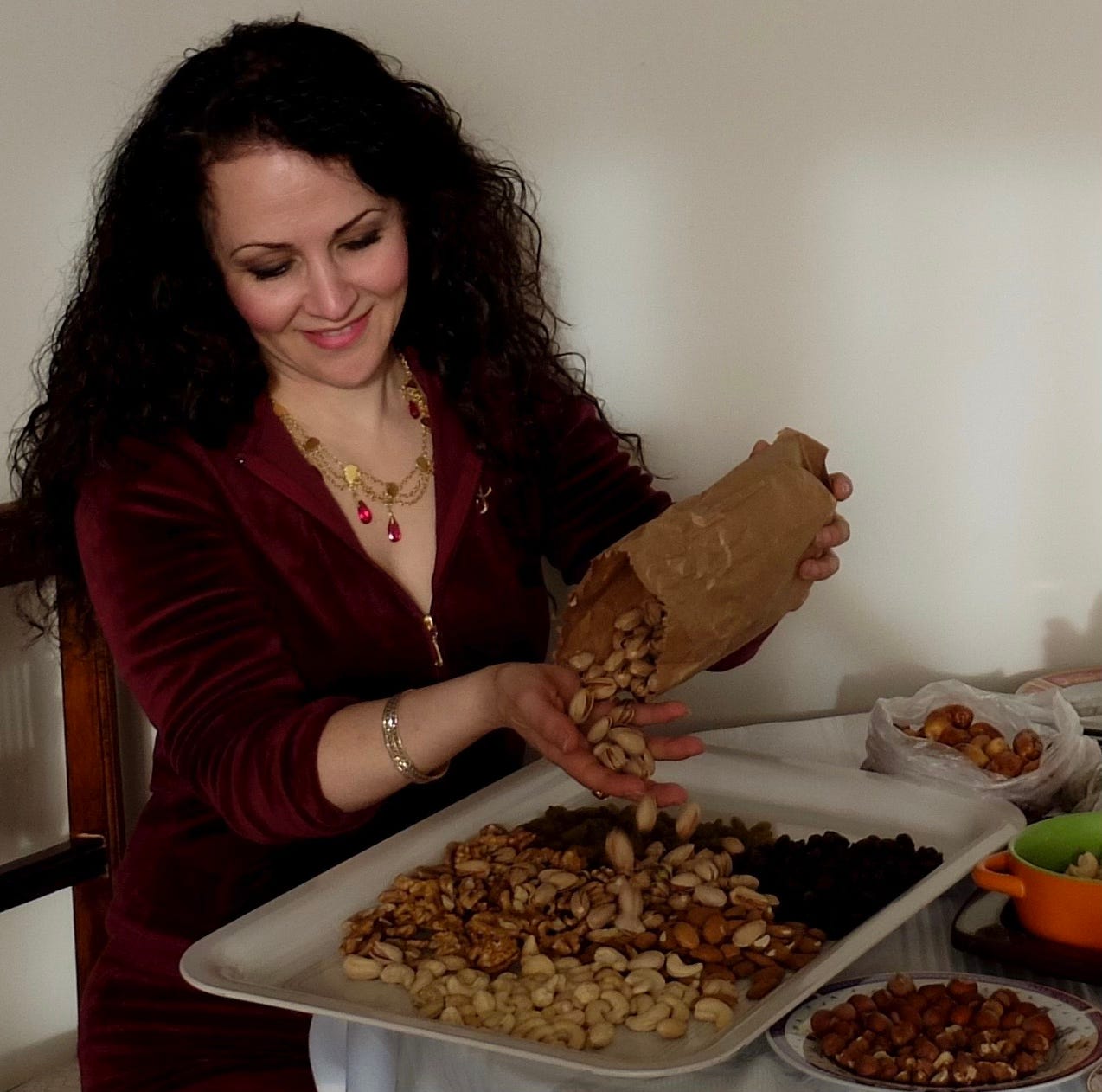Hello and welcome to Simi’s Azerbaijani Foodways1, a native perspective from an Azerbaijani (shortened to Azeri) gardener and cookery teacher. If, like me, you learn about a land, its culture and history through food then you are in the right place.
I hope that one day we can all take a journey to my homeland so you can see it for yourself. Until then, I'll set the scene and introduce you to the land, traditions, and food.
The reason I started this newsletter is my Azeri language, culture and food are dying out. For the past 20 years I’ve been exploring, teaching, growing, harvesting, cooking and preserving to document the ingredients, recipes, techniques and stories before they are completely lost.
My life intention is to record and share the joys of Azeri food and culture in an informative and entertaining way. I hope this becomes a community where we can have some fun whilst learning, sharing and exchanging ideas about indigenous foodways.
A bit of background
Azerbaijan is a country and a region of northwest Iran in the Caucuses. Azeris in Iran are of Turko-Mongolian and Iranian heritage, and what I write about is associated with these traditions. Archeological finds in the area show that it is where vini and viticulture, preserving, dairying, farming and bread making started; many of our popular foods to this day originate in this region.
Modern, politically motivated delineations of peoples on maps seem divisive to me, I enjoy and respect all food, whether eating, cooking and or teaching. I talk about food in the broader sense covering ingredients, cooking, social functions, etiquette and the politics of food.
I hope to add to our human food history by sharing the foodways of my inheritance. Sharing rather than staking a claim, and in doing so, discovering our similarities rather than differences.
I was born in Tabriz, in Azerbaijan, in Iran, famed for its food and hospitality amongst other things. I grew up in both Tabriz and Anglesey, North Wales. I started Simi’s Kitchen in 2009 in Bath. It has been a privilege to share my food and knowledge in my classes and now I’d like to offer it to a wider audience. At Simi’s Kitchen, I teach world food, specialising in Azerbaijani cuisine.
Azeri is one of the many Turkic languages spoken throughout this region, because I’m from Iran my language has many Iranian and Arabic words. In Iran, we are not taught to read or write in Azeri; it remains solely an oral language. As such, I cannot research written material and instead rely on interviews and investigations. I understand that languages and food evolve over time.
Between the early 20th century biblioclasm or libricide in the region—due to both wars and government decrees, and the influence of social media and satellite TV from Turkey, Iranian Azeris are experiencing rapid changes in language, pronunciation, fashion, and food. This accelerated shift makes it even harder for me to find Azeri terms, phrases, or sayings, particularly those related to cooking and food.
This makes my work both essential and urgent. Each time I return to Azerbaijan, someone corrects or comments on my pronunciation or use of Azeri, not because it is incorrect, but because it is considered "old-fashioned."
Being a gardener and gourmet, my monthly newsletter will be about seasonal topics, nutritious and thrifty recipes which I like to call soil to spoon food (we mainly eat with a spoon).
Having an academic background, I can’t help but dig into the latest findings on a given topic, I take an almost anthropological and evolutionary approach to each piece. To date I haven’t found a single reliable source on the food and traditions of Azerbaijan, please do let me know if you have good sources. Furthermore, I don’t have the luxury of going through old recipe books as there are none, for that reason this is journey of exploration. I use art, literature, scientific findings, travelogues, what I learn from home cooks and I look into rituals, traditional medicine, folklore and collective memory to inform my writing.
Finally, as a cookery teacher my aim is to share universally applicable techniques through Azeri dishes, to add to your repertoire and confidence in the kitchen. When I’m researching recipes in Azeri homes, and I ask how much of an ingredient is needed, I’m told a handful, when I ask for how long, they say’ll “you’ll know”, this means when I’m recipe testing I have to use all my senses. When I taught in a cookery school for 13 years, the students would be given the exact same ingredients weighed out for them, the same recipe and in the same kitchen, each dish would look and taste slightly different. I’d suggest using all recipes as a guide, if you are unsure about anything, where applicable, use less of an ingredient or take it off the heat 10 minutes before the given time. In most cases you can add, but you can’t take away. I’ve always found it helpful to see the cooked dish, I’m not a food photographer or stylist but I’ll include photos of recipes.
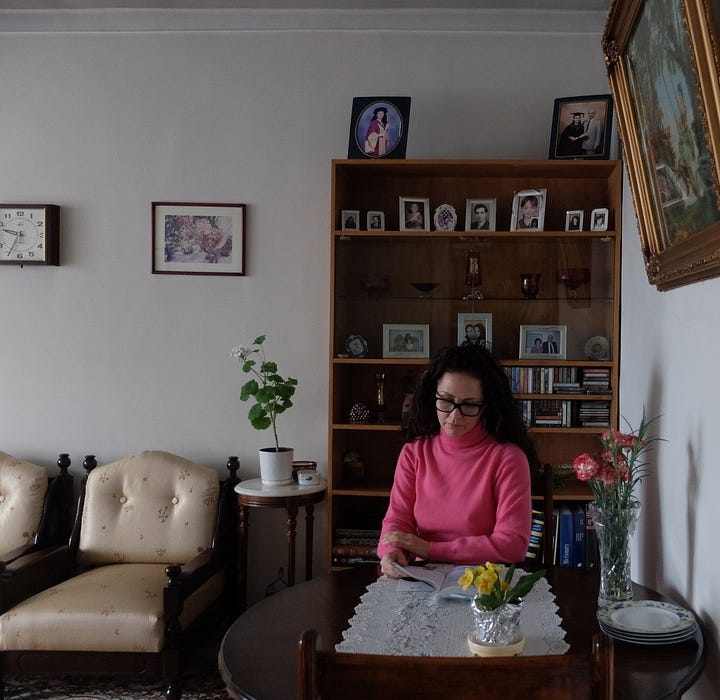
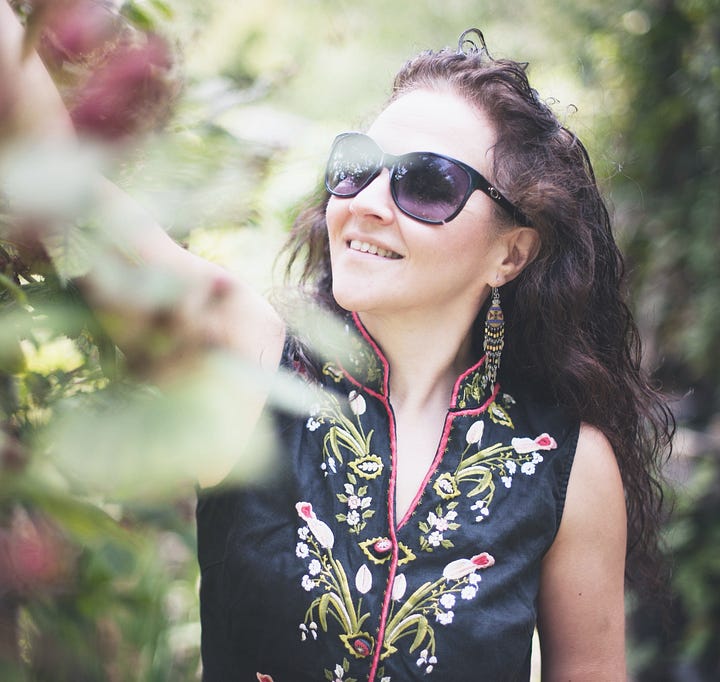
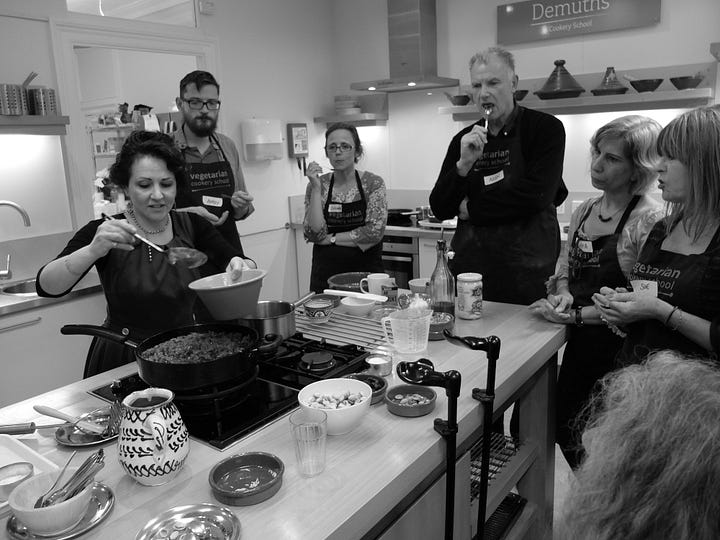

I use a lot of Azeri, Farsi and English terms which you can hear in the audio versions of newsletters; apparently, I have an Oskuie Azeri accent, my mother tongue. I am lucky to have a loving maternal family who are from Osku where my grandfather had bogh, forest garden of sorts where they grew most of what they needed. Osku is famous for its wafer-thin flatbread called lavash. My grandmother’s family spent their summers on the cool northern slopes of Sahand mountain in a village called Liqvan, famed for its ancient sheep’s milk cheese known as Liqvan paniri. When I eat lavash and Ligvan panir, my gut biome seems to know it is the food of my forebears, and besides the pleasure of being with my kin, physically I have a general sense of wellbeing. Genetic analysis of our gut biome seems to substantiate these feelings. We are a foodie family and to describe what it feels like when we are together, I would say there is a smell of cooking in the background, the vibe is loving, gentle and there are quiet conversations about food, gardening, science, poetry, music, film and art. I always say the smell of home for me is wonderful mix of Chanel, fried onions and wild rue uzariyh.
As with all indigenous foods, Azeri food is rooted in a particular ecology imbuing the act of cooking and sharing with spiritual and cultural significance, which we feel instinctively. Amongst many Azeri traits - which you’ll come to know - is hosting. We delight in sharing our home, garden, food or knowledge. Kindness and generosity are the words most often quoted, creating lasting memories on visitors to our homes and land. It is thrilling for me to be able to share my knowledge and recipes here.
More photos here
What to Expect:
For now it is all free, but in the future paid subscribers will have access to :
The newsletter relating to a seasonal ingredient, travelogue or cultural event usually with a recipe and an audio version.
When on travels, shorter weekly pieces, photos and videos on what I’ve cooked and eaten.
Gaze – My photo archive Where relevant, I include albums of photos related to articles there.
Occasional videos of cooking techniques.
Access to the chat where I hope we’ll create a community to share ideas, comments and stories.
Founding Members will have access to the above as well as:
Be able to attend one monthly Simi’s Kitchen Fixed Class in Bath, or a 2.5 hour online one-to-one cookery class.
Please share, restack, refer my substack, as I would love to build a community of like minded people who love to learn about a country, its history and culture through food.
For the recipes in this newsletter, please use the finest, most natural ingredients you can get, whether it is salt, pepper or oil, ideally organic and local.
Foodways is a great shorthand for this newsletter, it is the intersection of food in culture, traditions, and history, that is the eating habits and culinary practices as well as attitudes, beliefs and behaviours associated with food in daily life.


